Alfa Romeo Montreal, The Essential Companion by Bruce Taylor
2008, Veloce Publishing Limited, Dorchester, England, Tel 01305 260068 ISBN 978-1-845841-58-4
$130.00 USD
Order here
By Pete Vack
All photos courtesy of author and publisher
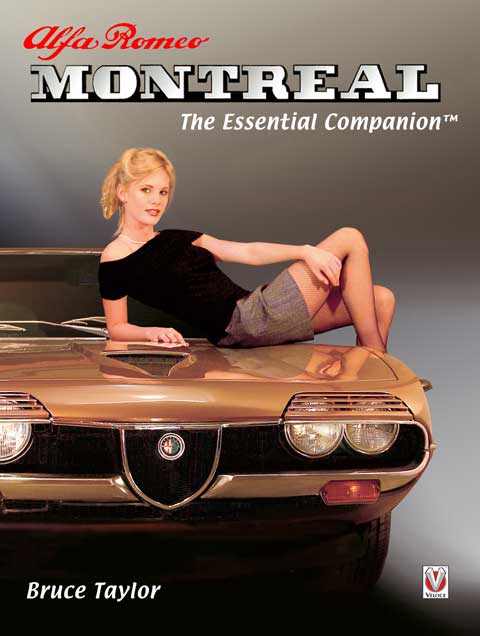
Who could ask for anything more?
If you owned an Alfa Montreal, you would need only three documents to completely restore the fabled Alfa V8; the factory technical publications, the factory parts book, and a new book, Alfa Romeo Montreal: The Essential Companion. In fact, most owners could get away with just the last, as it is one of the most complete, compelling, engaging, colorful and informative books ever published on a single make.
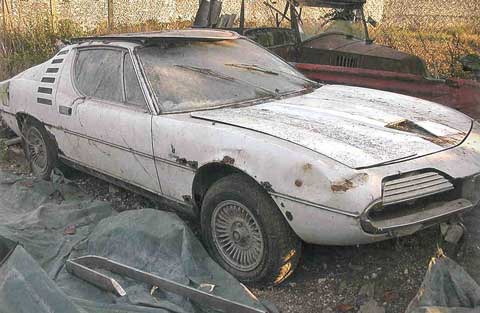 Not many left unrestored today, and values continue to increase for these rare Alfas.
Not many left unrestored today, and values continue to increase for these rare Alfas.
The sheer size and weight induced by a hard cover and 320 glossy color pages was impressive and it was obvious that this was a different kind of companion book. Richly illustrated is an understatement. Well written is taken for granted. Immense depth, covering virtually every single point of the car, is illustrated with both excellent color photos and diagrams as necessary in chapter after chapter. Only suspension and differential are given short shrift, probably because they are typical Alfa parts and extremely robust. Note too, that this is the only comprehensive book in English on the Alfa Montreal and may be the last word for a long time to come.
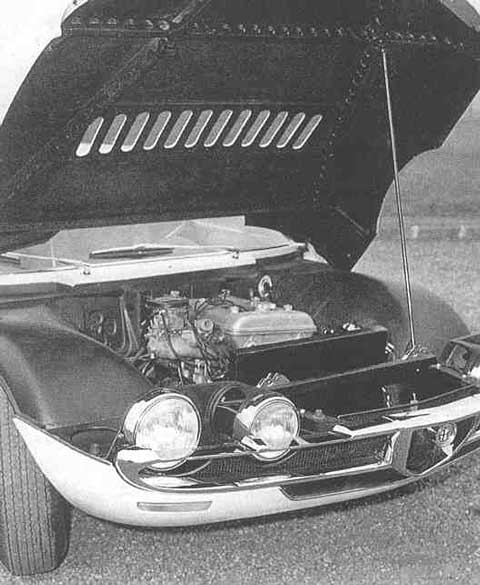 What could have been–the four cylinder Alfa in one of the showcars.
What could have been–the four cylinder Alfa in one of the showcars.
As with most guides, the first chapters deal with the history of the model, and this is done with considerable detail. The author found a shot of one of the Alfa 1967 Montreal cars with its hood open revealing the standard Alfa four cylinder which initially powered the prototypes. The engine, derived from the Alfa 33/2 racing power plant, was so heavily modified for production, “almost no component parts of the Montreal engine are common to the original 33/2 V8.” And, not being able to make a concrete decision on which engine to use, Alfa management told Bertone to change the design in order to accommodate both the four and the much larger and heavier V8. (In the same chapter, the name of Prince Rainier is misspelled; it’s the only error we could find).
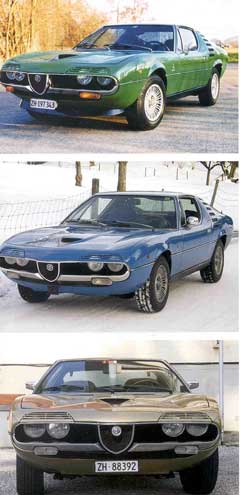
Color section illustrates ’70s hues.
The more we read of the book, the deeper it went. The author appears to have missed nothing. Paint codes, Appendix II; injection tune up, a full chapter; weak spots, how to spot and correct, in full color, chapter 5. Rocker switches, how to repair, page 136. Mechanical maintenance is given its own long and profusely illustrated chapter, written by someone who has been there and done that more than once. A full list of Montreal toy models constitutes chapter 12, Montreal advertising and literature, page 249; CD systems, under electrical maintenance, chapter 7; Spica Fuel injection, and oh, there are several types for the Montreal, the CSS, page 92, the BC, page 93, the TC, page 94.
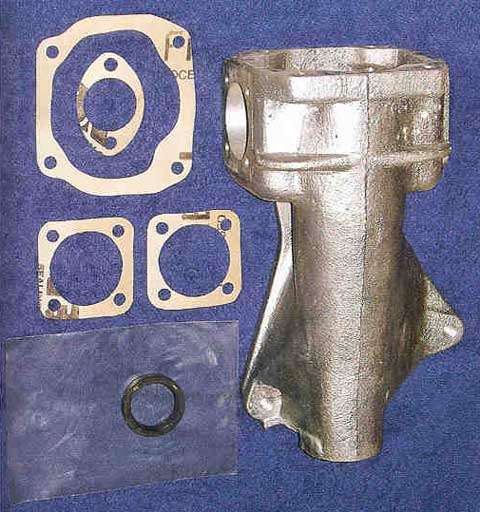
The fragile steering boxes are now being remanufactured using better alloys. If there is a problem with the Montreal, it is not only mentioned but detailed ways to solve the problem as well.
Alfas began to use a greater number of special tools in the seventies, fourteen for the engine, nine for the fuel injection system, twenty two for the ZF gearbox; for the Montreal the full list is on page 281. The author also provides great photos “..to give an idea of how functionally equivalent substitute tools can be fabricated.” This is followed by 24 pages of factory tool drawings!
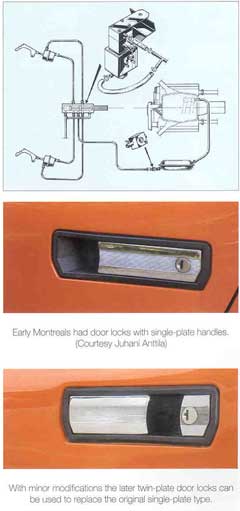
Sample of details.
Just a cursory glance told us this was a very special book. Who was the Merlin that put all of this together? The photographs, though many are obvious home brewed, are excellent throughout no matter what the source. The author explains clearly the foibles of the V8, how to do everything from set the valve clearances to replace bad bearings in the timing cover. He does it all while covering Montreals made for Europe, Great Britain and the U.S. It was time to read the back flap.
Author Bruce Taylor lives in Switzerland. He devotes a large part of his time helping Montreal owners get the most from their cars. Taylor is a Chartered Engineer with a PhD from Edinburgh University. He recently retired from CERN, the European Organization for Nuclear Research in Geneva. CERN’s main area of research is particle physics, “the study of the fundamental constituents of matter and the forces acting between them.” For Taylor, then, delving into the complexities of the Spica Fuel injection is mere child’s play. The fact that he can write so to make others understand is an added pleasure.
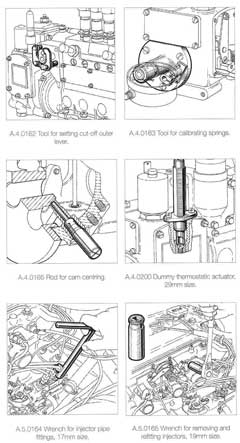
A few of the factory
tool drawings.
Don’t be put off, or on, by the cover. It’s a bit of a fooler; an attractive model with mesh stockings sits provocatively on the hood of a Montreal. We didn’t mind this, but the complexities, depth, and sheer intensity of the material behind the cover is betrayed by the lightness of the cover material. In short, a detailed cutaway of the Alfa V8 engine would have been more in keeping with the book’s depth and excellence. Alas, far less attractive.
There are two downsides to this incredible book; one is the cost, about $130 US. The other is that if you buy the book without already owning a Montreal, you may be very tempted, encouraged and excited about going out and finding a good Montreal. And that, my friend, will cost you a great deal more than just the book.
I was engrossedby the Monteral book review. Informative as hell and it even provolked those deep, but cloaked feelings of attraction to these cars.
Thank you for it and this fine journal
Overall a good review of what appears to be a great book. A couple counterpoints to the reviewer.
1. With regards to the cover – I think the light hearted cover adds to the books appeal. Alfa has used “Alfa Girls” over time to promote it’s products – the Montreal in particular was shown with Alfa Girls numerous times in official photos.
2. Reviewer states that “the name of Prince Rainier is misspelled; it’s the only error we could find).” If you Google the Monaco prince it finds there are three variations of the name (Prince Renier, Prince Rénier and Prince
Rainier) with hundreds of thousands of “hits” for each of them. Perhaps the one chosen by the author should be seen as a variation of the spelling rather than a misspelling.